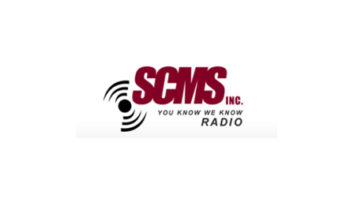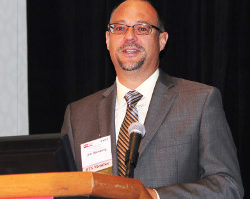
Hal Kneller has a new gig — he’s now vice president of Global Sales and Business Development at GeoBroadcast Solutions.
Company founder Chris Devine says Kneller will oversee three initiatives that make use of Kneller’s business development, sales, as well as marketing, experience.
The first of the three projects is ZoneCasting, the GBS technology that allows users to geo-target listeners for delivery of hyperlocal content using a single FM frequency network. ZoneCasting will permit an FM station to break its coverage area into zones to broadcast separate commercial or other public service content like local flood warnings, or news briefs within those zones while minimizing on-channel interference, according to GBS.
The company filed a petition for rulemaking about a year-and-a-half ago at the FCC, we’ve reported. “The transmissions we set up are also effective for filling-in areas of a signal that are challenged,” Devine tells me.
The second project is MaxxCasting. The concept is similar to ZoneCasting for targeted, over-the-air radio broadcasting, but instead it focuses on simulcasting FM content to improve coverage. MaxxCasting can be deployed today under existing booster regulations, they say.
MaxxCasting technology is more effective than traditional booster technologies, they add. Normally if you put up a booster, the chances of successfully rebroadcasting the main signal are diminished without significant terrain shielding the main signal from the booster or vice-versa. That interference can sound like multipath, says Devine.

GBS has developed a system of several low-to-the-ground synchronous boosters that take into consideration issues like tower height, spacing, timing and distance. The specific height and power ratios are critical to mitigating interference, either to the main signal or to the booster, he tells me. Using the GBS system, the interference can be minimized and directed away from populated areas, according to GBS.
Kneller adds: “Synchronous boosters are not new. The problem is many engineers can’t design the system,” and it’s a little more complicated than handing the issue off to a contract engineer. So, GBS designs the system for a customer, including terrain studies and helps out with the installation.
GBS is currently working with three clients to install MaxxCasting.
The third project Kneller is overseeing is RDS-related; right now, they’re calling it RDS/RBDS Digital ZoneCasting for use both in and outside the U.S. The information you’d want geo-targeted is broadcast on 57 kHz. “The commission does not prohibit geo-targeting for RDS, so we could set up a system for a station so it could receive localized traffic or an alert or advertising on your RDS screen,” says Kneller.
Manufacturing partners with all three systems are Harris Broadcast and Jampro Antennas.
Kneller has had a long broadcasting career, beginning as a board operator at WHCN(FM), Harford, Conn., in 1965 while still in high school.
He’s had two stints at Harris, the latest from 2002 to 2008. His last title there was senior manager, Radio Broadcast Business Development. He also managed public radio initiatives for the broadcast transmission equipment manufacturer.
He comes to GBS from Nautel, where he was regional sales manager for Europe, Russia, Israel and Turkey from 2009 until June. Previously, he was director of International Business Development for iBiquity Digital Corp.
He’s also a station owner. Kneller and his wife, Jan, own Heartland Broadcasting Corp., a two-FM station group located in inland Florida.
Kneller understands the broadcast business at every level, with complementary experience in technology, management and revenue driving, according to Devine.










